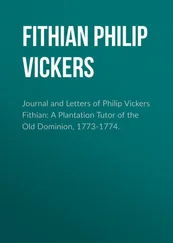1. One of the few exceptions is Basil Sumner’s masterly Survey of Russian History (2nd edn, London, 1947).
1: THE RUSSIANS: WHO ARE THEY?
1. B. M. Fagan, The Journey from Ede: The Peopling of Our World (London, 1990), p. 183. At one time mammoth tusks had been plentiful enough to use as building frames or tent poles.
2. O. Semino et al., ‘The genetic legacy of palaeolothic Homo sapiens sapiens in extant Europeans’, Science, 290 (5404), 10 November 2000, 1155—9, and the interview with Peter Underhill in Montreal Gazette, 11 November 2000, p. D-9. Also L. Cavalli-Sforza, P. Menozzi and A. Piazza, The History and Geography of Human Genes (Princeton, 1994), pp. 3—59 (for the principles) and map 5.2.7, pp. 262—3, and atlas C-5 (for the geographic spread). Despite subsequent intermarriage with Mongols and other peoples of different genetic heritage, the evidence shows Russians to be of predominately Caucasian stock. There was a discursive but interesting discussion on genetics relevant to history on the Marshall Poe e-mail connection (mpoe@fas.harvard.edu ) in September 2002. It centred on haplotype M17, which distinguishes eastern from western Europeans.
3. V. Bunak, ‘Antropologicheskie tipy russkago naroda i voprosy istorii ikh formirovanie’, Kratkie soobshcheniia Instituta etnografii AN/SSR, 36 (1962), 75-82.
4. L. and F. Cavalli-Sforza, The Great Human Diaspora (Reading, Mass., 1995), especially pp. 115—16. For indications of genetic differences between Russians and other Europeans, see Cavalli-Sforza et al., History and Geography of Human Genes, p. 270.
5. G. Vernadsky, Ancient Russia (New Haven, 1947, repr. 1973), pp. 21-2; D Christian, A History of Russia, Central Asia and Mongolia, vol. 1 (Oxford, 1998), pp. 77—8; J. Mallory, In Search of Indo-Europeans. Language, Archaeology and Myth (London, 1989), p. 196.
6. P. Dolukhanov, The Early Slavs: Eastern Europe from the Initial Settlement to Kievan Rus’ (London, 1996), p. 70. Sredny Stog is associated with the domestication of the horse.
7. Christian, Russia, Central Asia and Mongolia, vol. 1, p. 40.
8. Dolukhanov, The Early Slavs, pp. 101-2.
9. Ibid., pp. 109-15.
10. See C. Renfrew, Archaeology and Language (London, 1987) — but also his critic J. Mallory, who concludes that Renfrew’s idea of the spread of the first Indo-Europeans ‘is not congruent with either the linguistic or archaeological evidence’ (In Search of Indo-Europeans. Language, Archaeology and Myth). I am grateful to my former colleague Bruce Trigger for guidance in this area. While haplotype U entered the bloodstream of Europeans some 40,000 years ago, and haplotypes H and V more than 10,000 years ago, bearers of haplotype J ‘may well have descended from… women who came to Europe 8,000 years ago from Anatolia’ — Times Literary Supplement, May 2001, in a review of B. Sykes’s The Seven Daughters of Eve.
11. ‘At that time there was only one Slavic people, including those along the Danube who were subject to the Hungarians, the Moravians, Czechs, Poles and Polanians, who are now called Russians’ (adapted from the translation by S. Cross and P. Olgerd, eds., of The Russian Primary Chronicle (Cambridge, Mass., 1953), p. 62).
12. Baedeker, Russia: A Handbook for Travellers (Leipzig, 1914), pp. xxxviii-xxxix.
13. L. Milev, Velikorusskii pakhar’ i osobennosti rossiiskogo istoricheskogo protsessa (Moscow, 1998), pp. 554—6. Milev’s theory will receive some attention later in the book.
14. Dolukhanov, The Early Slavs, pp. 117-19; M. Gimbutas, The Slavs (London, 1971), pp. 24-5; Vernadsky, Ancient Russia, pp. 48-50.
15. Dolukhanov, The Early Slavs, pp. 119—25; Gimbutas, The Slavs, pp. 44, 46—9.
16. See V. Levasheva in Trudy gosudarstvennogo istoricheskogo muzeia, vyp. 32 (Moscow, 1956), pp. 2off., and B. Grekov, Die Bauern in des Russlands von den ältesten Zeiten bis den 17 Jahrhundert (2 vols., Berlin, 1959), passim.
17. Christian, Russia, Central Asia and Mongolia, vol. 1, pp. 331—3.
18. See the maps in P. Barford, The Early Slavs: Culture and Society in Early Medieval Eastern Europe (Ithaca, 2001), pp. 376, 378.
19. On the properties of Russian rye and the lore associated with it see R. Smith and D. Christian, Bread and Salt: A Social and Economic History of Food and Drink in Russia (Cambridge, 1984), pp. 5—6 and passim; Christian, Russia, Central Asia and Mongolia, vol. 1, p. 331 (and inference therefrom).
20. Barford, The Early Slavs, especially the maps on pp. 387, 399.
21. See the suggestive passage in ibid., pp. 189-91. Also W. Ryan, The Bathhouse at Midnight (University Park, Pa., 1999), ch. 2, esp. p. 37.
22. Christian, Russia, Central Asia and Mongolia, vol. 1, p. 340. For a translation of the passage from Ibn Khurdadhbih see G. Vernadsky et al., A Source Book for Russian History from the Earliest Times to 1917 (3 vols., New Haven, 1972), vol. 1, p. 9. On Khazar metrology and money economy see O. Pritsak, The Origins of the Old Rus’Weights and Monetary Systems (Cambridge, Mass., 1998), esp. p. 32. On taxes paid to Khazar towns see Barford, The Early Slavs, p. 237.
23. The remains at Old Ladoga, like the first settlements at Novgorod, have been carefully investigated by archaeologists — see M. Brisbane, ed., Archaeology of Novgorod: Recent Results from the Town and its Hinterland, Society for Medieval Archaeology, monograph 13 (Lincoln, Nebr., 1992); for the broader background S. Franklin and J. Shepard, The Emergence of Rus’ 730—1200 (London, 1996), pp. 12ff. On the early association of Vikings and Slavs, see M. Liubavskii, Obzor istorii russkoi kolonizatsii, ed. A. la. Degtarev et al. (Moscow, 1996), p. 55.
24. Brisbane, ed., Archaeology of Novgorod, pp. 9off. See also E. Nosov, ‘The problem of the emergence of early urban centres in northern Russia’, in J. Chapman and P. Dolukhanov, Cultural Transformations and Interactions in Eastern Europe (Aldershot, 1993), pp. 236-56, and A. Kuza, ‘Sotsial’no-istoricheskaiatipologiia drevnerusskikh gorodov x—xiii vv’, in Russkii gorod: issledovania i materially, no. 176 (Moscow, 1983), pp. 4-36. On the phenomenon of ‘paired’ towns, see Nosov, ‘Early urban centres in northern Russia’, and the references therein.
25. Ibn Rusta is quoted in Franklin and Shepard, The Emergence of Rus’, p. 45.
26. I. Dubov, ‘The ethnic history of northwestern Rus’ in the ninth to the thirteenth centuries’, in D. Kaiser and G. Marker, eds., Reinterpreting Russian History (New York, 1994), pp. 14-20. Also A. Sakharov, ‘The main phase and distinctive features of Russian nationalism’, in G. Hosking and R. Service, eds., Reinterpreting Russian Nationalism (London, 1995), pp. 7—18.
2: THE FIRST RUSSIAN STATE
1. See A. Ya. Degtarev’s rationalization of the legend that the men of Novgorod summoned Riurik to rule as their prince in Liubavskii, Obzor istorii russkoi kolonizatsii, p. 55.
2. The importance of the Khazars is suggested by the fact that Viking rulers of the early tenth century styled themselves ‘kagan’, the title of the Khazar ruler — see Barford, The Early Slavs, pp. 238—9. The Khazars were successful commercially, and even developed money economy and coinage — see O. Pritsak, ‘Did the Khazars possess a monetary economy?’, in his Origins of the Old Rus’ Weights and Monetary Systems, pp. 21—32.
Читать дальше





![Stephan Orth - Behind Putin's Curtain - Friendships and Misadventures Inside Russia [aka Couchsurfing in Russia]](/books/415210/stephan-orth-behind-putin-s-curtain-friendships-a-thumb.webp)





